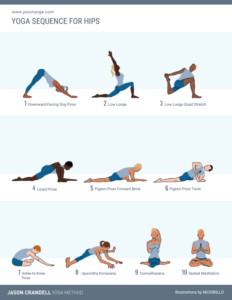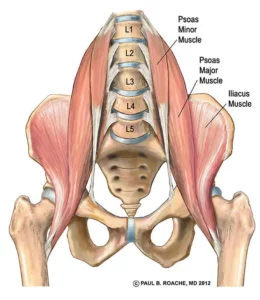I don’t like to admit it, but I’m a pretty nostalgic guy. So, when I look back at the years I spent practicing Ashtanga Yoga, I’ve got nothing but good things to say. Wellll…except for that point where you repeat Paripurna Navasana to Tolasana, over and over again. If you practiced Ashtanga Yoga, this series also got you every time. Right? Admit it, you’ll feel better.
I may have loathed the Navasana series, but I’ve always respected the boat pose. The posture simultaneously strengthens your hip-flexors, abdominals, and adductors—not to mention your resolve. If you’re looking for one posture that works your entire core, strengthens your body for arm balances and inversions, and builds heat in a very short period of time, you’ve found your match.
One Quick Tip About Boat Pose
I instructed my students to sit on the front edge of their sitting bones in this pose for a decade. I’ve long since changed my tune because no one—I mean no one—is actually on the front of their sitting bones in this posture. You don’t want to rock too far back, but if you look at the image below you’ll see that the sitting bones are shaped like a rocking horse. In order for you to truly be on the front of your sitting bones, you’d actually be in the inferior pubic rami, your pelvis would be rotated forward and your spine would be vertical. That’s not happening in Navasana for anyone. More accurately, you’re sitting just behind the center of your sitting bones and the front of your tailbone. Check out the little arrow on the diagram below. That’s where you’re sitting.

If you want to learn more, join for my 500-hour Yoga Teacher Training Certification Program or for my workshops, Mastering the Art of Yoga Sequencing or Managing Yoga Injuries.
WARM UP
Paripurna Navasana strongly contracts your abdominals and hip-flexors. Secondarily, it engages your inner legs and lower back. To warm up your center before doing Navasana, practice “core connector” (see Abs Reboot if you’re not already familiar with this pose). You can also do a few Sun Salutations to get your blood moving.
HOW TO DO BOAT POSE (PARNIPURNA NAVASANA)
Navasana is a demanding pose, but it’s relatively simple. Here are the steps:
1. Start by sitting on your mat with your knees bent and your feet on the floor. Lift your heels off the floor and press your toes into the floor. Imagine you’re trying to pull your mat toward you with your tiptoes. Feel your hip flexors begin to kick into gear.
2. As you hip flexors fire up, draw your lower belly toward your spine. Lengthen up through your spine and lift your chest.
3. Keeping your chest lifted and broad, raise your shins until they’re parallel to the floor.
4. Squeeze your inner legs together to engage your adductors. Reach your arms forward so that they’re parallel to the floor. If you want to challenge yourself, you can reach your arms toward the ceiling.
5. Continue working with your knees bent and your shins parallel to the floor. Or, intensify the posture by straightening your legs. If possible, elevate your legs so that your toes are the same height as your eyes.
6. Refine the posture with the cues in the infographic.
7. After 3-5 breaths in the pose, slowly lower your legs and rest. Repeat 3 to 5 times.
IF I CAN’T DO Boat Pose YET, WHAT SHOULD I DO INSTEAD?
If you can’t do Navasana, you need to work on other core-strengthening postures that are more accessible. Please check out the reclined core postures in this article. And, remember that you can always keep your knees bent and your fingertips on the floor in Navasana if you need more support.
PART II: ANATOMY AND SEQUENCING FOR Boat Pose
WHICH MUSCLES DOES NAVASANA STRENGTHEN?
If you want to see some visuals and understand your core more completely, check out my Illustrated Guide to Yoga and Your Core, Part 1 & Part 2.
Your hip flexors
Your hip flexors (specifically your illiopsoas and rectus femoris) bear the brunt of this posture. The higher you lift your legs and the more vertical you make your torso, the more your hip flexors work.
Your abdominals
Although your abdominals play second fiddle to your hip flexors in Navasana, they are still chugging along. While all of your abdominals are firing away in this pose, your transversus abdominis has the biggest job. It’s responsible for the “navel toward spine” action and it’s working hard to your torso stable and upright.
Your inner legs
Your adductor muscles are working to keep your inner legs squeezed together. To strengthen this group even more, experiment with squeezing a block between your inner legs in this pose.
Your spinal muscles
Your spinal muscles, especially the erector spinae group, are engaging to help your torso stay upright. They’re working with your abdominals to maintain the natural curves of your spine.
SEQUENCING FOR PARIPURNA NAVASANA
You can sprinkle Navasana nearly anywhere throughout your practice and classes. Practicing Navasana early in the sequence helps students warm up and connect to their center. Practicing Navasana toward the end of the sequence can help ensure that you and your students feel physically satiated—especially if you want to create a more demanding experience. If you feature Navasana in your practice and do several of them, be sure to include a few hip flexor and quad openers afterward. This will help re-lengthen these muscles after working to fatigue.
{illustration by MCKIBILLO}





